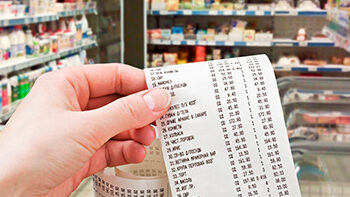
Convenience Shopping for Food is Especially Hazardous
According to the United States Department of Agriculture (USDA), you are most likely to buy convenience items when you are busy and looking for a quick item to meet your needs. This applies to your food purchases. You may think you do not have time to cook much, especially if you work throughout the week. As a result, you may buy fast food, go out to dinner, or buy prepared meals. All those options are costly but common. In fact, 2016 USDA data indicated approximately 44 percent of American food budgets were spent on restaurant foods or other foods purchased outside of the home that year. In addition to being financially hazardous, convenience shopping for food also has other pitfalls. For example, the nutritional value of prepacked food is usually low. Even if you are buying restaurant food, you have no control over the freshness or quality of the food. Therefore, cooking at home also makes sense for health reasons.Identifying Your Convenience Shopping Triggers
If you can identify what triggers your desire to buy foods for convenience, you may be able to fix the problem. For example, a common reason to dine out is a dislike for cooking. If you do not like to cook, rather than dining out, try cooking one day per week. By refrigerating or freezing leftovers, you can access convenient meals throughout the week without feeling tied to your kitchen. Alternatively, you may have a lot of restaurants near your home that are tempting you. If so, try finding similar recipes to your favorite restaurant foods you can cook at home. Your impulse shopping is most likely not limited to food. Clothing, electronics, and other items are just as convenient in today’s society. If you are spending too much money on those items and your budget is suffering, examine your motivations before each purchase. Ask important questions like:- Do I need this?
- Can I get a better deal on this later?
- Is there room for this in my home or on my property?
- Can I afford this?
- When will I use this?
Make Convenience Purchases with Cash
You do not need to stop making convenience purchases entirely to stick to your budget. For example, if you enjoy stopping for a morning cup of coffee on the way to work, it may be worth the expense. However, you do need to control how much you spend on such purchases. A good way to do so is by using cash to pay for convenience items. Thanks to modern technology, it is tempting to consider cash obsolete, or at least unsafe. It is true credit and debit cards offer more security. However, purchases made with cards make it harder to track your spending. If you leave the house in the morning with a set amount of cash to devote to your convenience purchases, you cannot accidentally exceed that amount. If you want to eliminate convenience shopping almost entirely, cash can also help you. For example, if you are going food shopping, you can make a list and set a top amount you want to spend before you leave the house. Take only the necessary amount of cash with you. Then in-store sales and other devices used by stores to encourage convenience purchases, such as displays of snacks by the cash registers, cannot tempt you into spending more than your budget.Limit Online Convenience Shopping
Making online purchases is the ultimate form of convenience shopping. You can buy anything you want, including groceries, clothing and entertainment items. There are some potential budget advantages to online shopping. For example, you do not have to waste money on gas to drive to a store and make a purchase. However, those advantages are useless when you make more online purchases than you can afford. If your budget is suffering because of your online convenience shopping, limiting your online purchases can get you back on track. Online shopping websites are designed to draw you in. They use visual cues and other tactics to keep you browsing for long periods of time. That can lead to making more convenience purchases. Single-click checkout systems can also encourage you to buy more items than you really need. As soon as a product comes to mind, you can order it. However, having the ability to make a convenience purchase in seconds does not automatically make the purchase worthwhile. To limit online convenience shopping, avoid setting up one-click purchasing options. Also, do not save your credit card information on any website. That forces you to decide if the item is worth the effort of inputting your payment information. You can also use online shopping cart system to save an item in your favorites list for another time. By doing so, you give yourself even more time to decide if the purchase makes sense. Related Article: Creating a BudgetBy Admin –